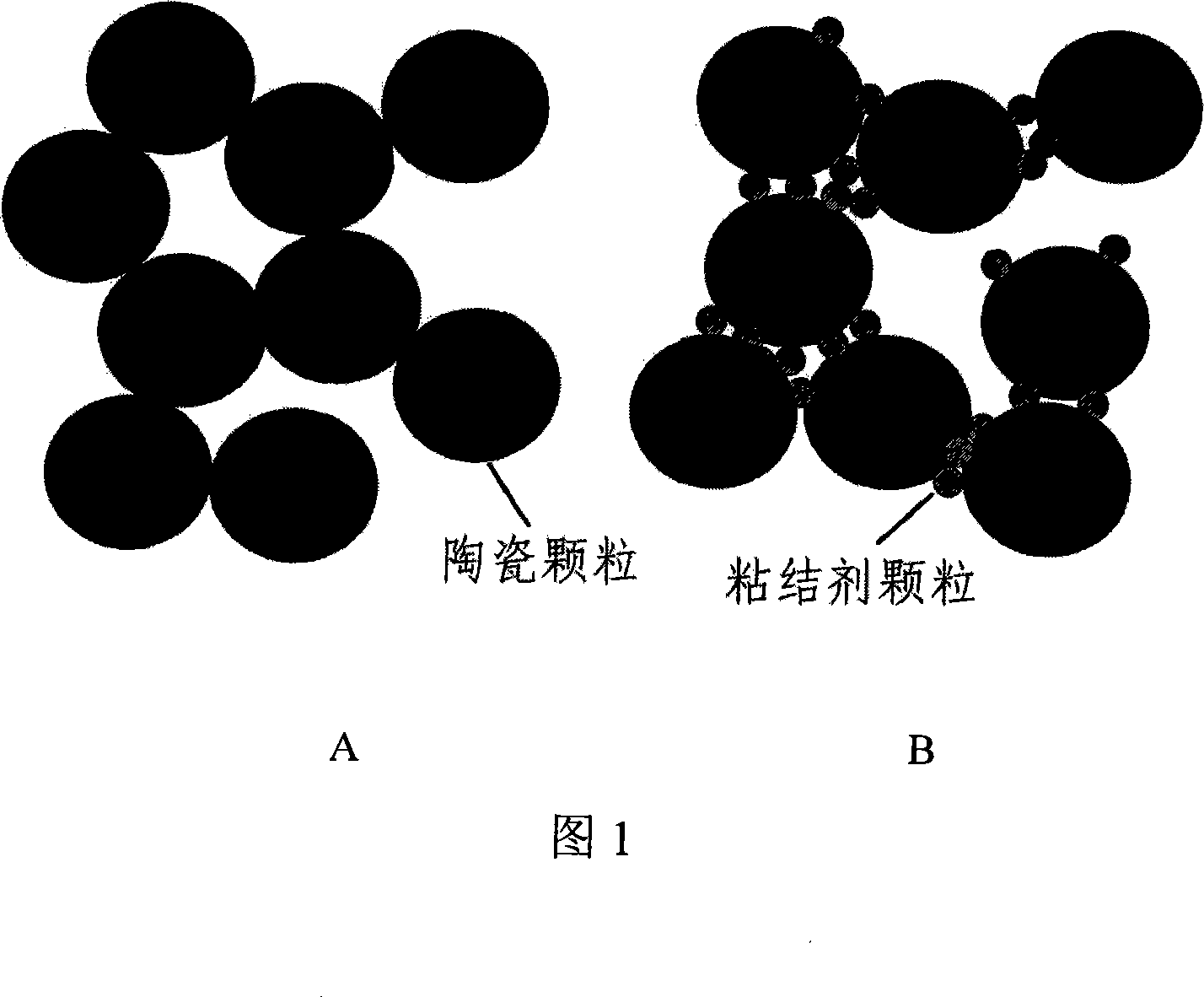Inorganic binder, preparation method and its application in preparation of porous ceramics
An inorganic binder and a technology of the binder are applied in the field of inorganic binder, preparation and its application in the preparation of porous ceramics, which can solve the problems of poor material operability, reduction of ceramic firing temperature, deformation, etc. To achieve the effect of increasing the bonding area of grain boundaries and improving the strength
- Summary
- Abstract
- Description
- Claims
- Application Information
AI Technical Summary
Problems solved by technology
Method used
Image
Examples
Embodiment 1
[0021] Mix 1.20 g of boric acid with 3.00 g of phosphoric acid solution (mass concentration: 85%), and heat to 100° C. to make a sol. Then, 100 g of aluminum hydroxide powder (median particle size: 4.10 μm) was added into the cooled sol, ground and mixed to obtain an inorganic binder. Take 2.00g of inorganic binder and mix evenly with 18g of silicon carbide powder (median particle size is 20μm). Afterwards, 3 g of graphite powder (with a median particle size of 10 μm) and 1 g of hydroxymethylcellulose solution (with a mass concentration of 2%) were added and mixed uniformly. The obtained silicon carbide powder mixture was dry-pressed with a pressure of 50 MPa. The green body is fired in an air atmosphere at 1300°C, and the holding time is 2h. The results show that the flexural strength of the sample is 12.6MPa, and the porosity is 46.8%.
Embodiment 2
[0023] With embodiment 1, just do not add pore forming agent graphite powder. The bending strength of the obtained porous ceramic sample was 28.9MPa, and the porosity was 37.5%.
Embodiment 3
[0025] Same as in Example 1, the aluminum hydroxide powder was replaced by aluminum oxide powder (median particle size: 1.49 μm), and the amount of boric acid was 1.80 g. The bending strength of the obtained porous ceramic sample was 10.1MPa, and the porosity was 45.3%.
PUM
| Property | Measurement | Unit |
|---|---|---|
| Bending strength | aaaaa | aaaaa |
| Bending strength | aaaaa | aaaaa |
| Bending strength | aaaaa | aaaaa |
Abstract
Description
Claims
Application Information
 Login to View More
Login to View More - R&D
- Intellectual Property
- Life Sciences
- Materials
- Tech Scout
- Unparalleled Data Quality
- Higher Quality Content
- 60% Fewer Hallucinations
Browse by: Latest US Patents, China's latest patents, Technical Efficacy Thesaurus, Application Domain, Technology Topic, Popular Technical Reports.
© 2025 PatSnap. All rights reserved.Legal|Privacy policy|Modern Slavery Act Transparency Statement|Sitemap|About US| Contact US: help@patsnap.com

